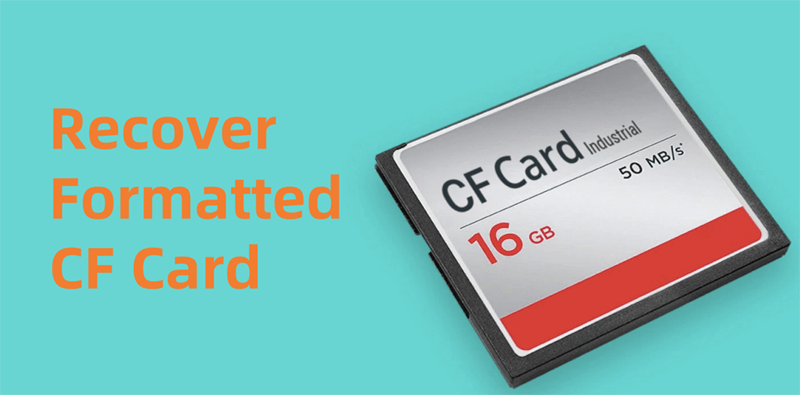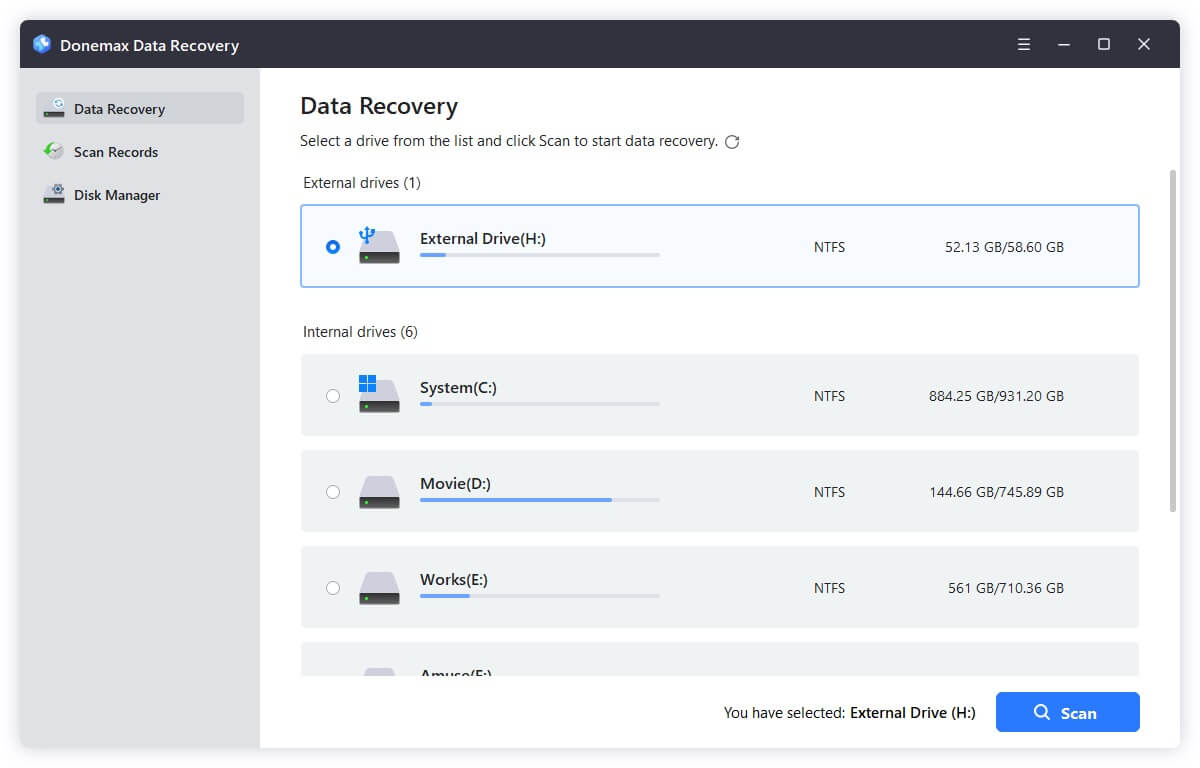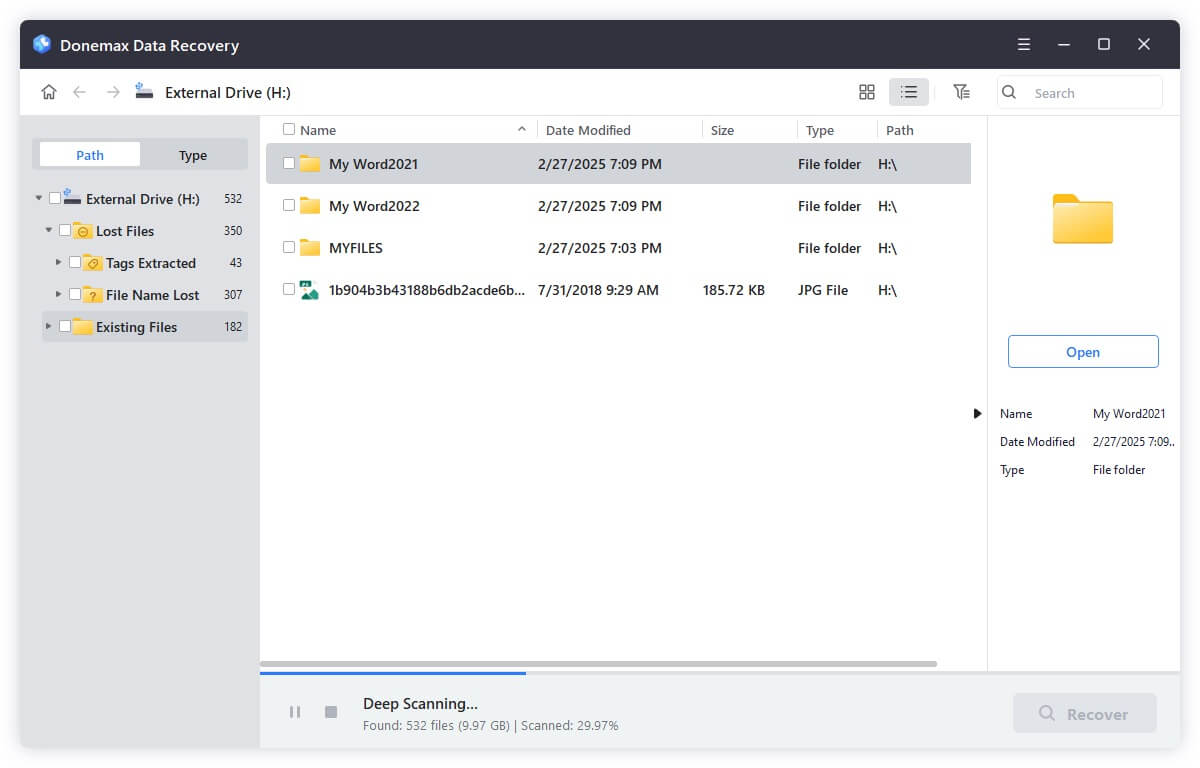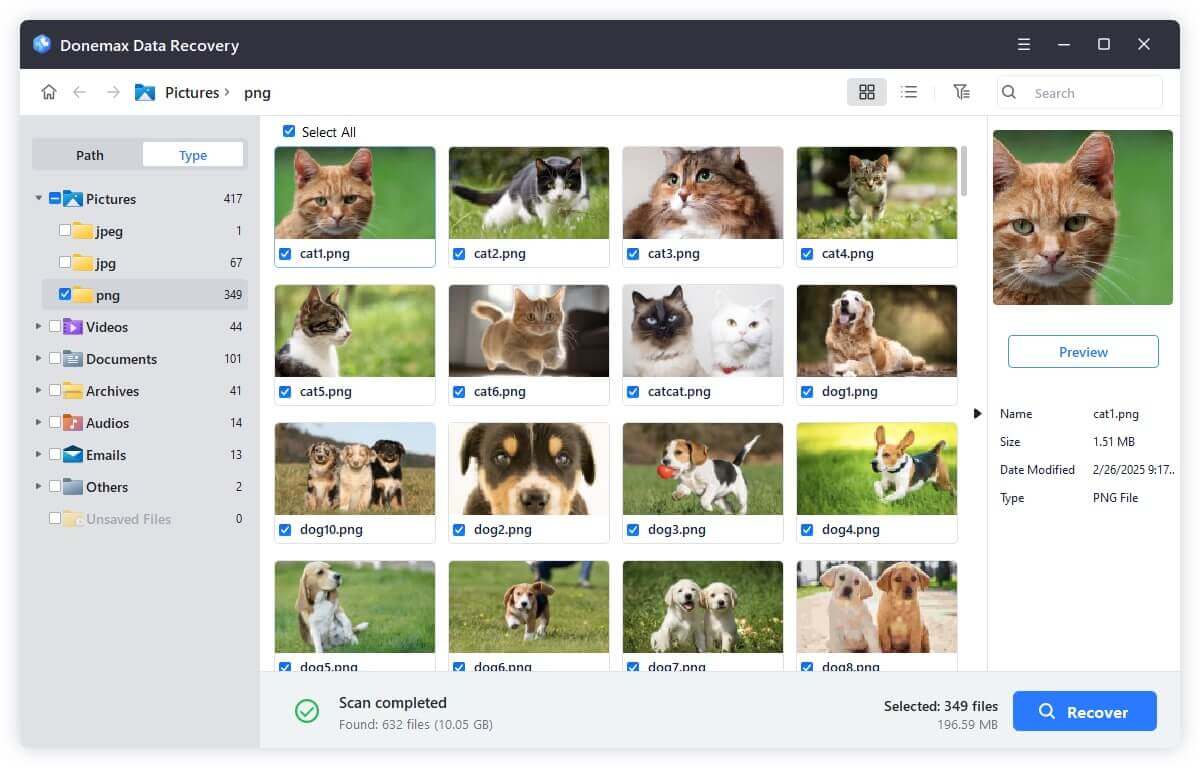Before we start: Can formatted CF card be recovered? Yes, data recovery software - such as Donemax Data Recovery can easily unformat a CF card and recover all files from the formatted CF card. It also can help you fix corrupted CF card.
PAGE CONTENT:
CompactFlash (CF) cards are widely used in professional digital cameras, video recording equipment, and other high-performance devices due to their durability and high-speed data transfer capabilities. Whether you're a photographer, videographer, or field technician, losing data from a CF card - especially due to accidental formatting - can be devastating. Fortunately, recovery is often possible.
In this comprehensive guide, we'll explain how CF card formatting works, why files can still be recovered, and walk you through proven methods to retrieve your lost data. Whether you choose DIY software or professional services, this article provides everything you need to know to recover a formatted CF card effectively.

Understanding CF Card Formatting
Formatting a CF card is often necessary to prepare it for use or resolve file system errors. However, formatting - especially when done accidentally - results in immediate data loss from a user's perspective. But does formatting truly erase the data?
Quick Format vs. Full Format
When you format a CF card, the system marks the storage space as available for new data by removing the index (file allocation table) that tells the system where data is stored. The actual files remain intact until overwritten. There are two types of formatting:
- Quick Format: Only the file structure is removed. Data can usually be recovered using recovery tools.
- Full Format: Overwrites every sector with zeros, making recovery nearly impossible.
Therefore, if you've done a quick format, the chances of recovering data are significantly higher.
Common Causes of CF Card Formatting
- Accidental formatting in camera or computer
- Corruption due to improper ejection or power loss
- Card not recognized and prompts to format
- File system errors (RAW or unknown format)
- Virus or malware infection
Understanding how and why the card was formatted helps you determine the best recovery strategy.
What to Do Immediately After Formatting
Once you realize that your CF card has been formatted, your actions will determine how successful your recovery efforts will be. Here's what you must do immediately:
- Stop using the card: Do not take new photos, videos, or save files on it.
- Avoid reformatting the card again: Multiple formats can increase the risk of data being overwritten.
- Disconnect the card: Remove the CF card from your camera or reader to prevent further use.
- Use write-protection switch (if available): To prevent accidental overwriting while connected to a computer.
These simple precautions dramatically increase the likelihood of recovering your files.
Can You Really Recover Data from a Formatted CF Card?
Yes, data from a quick formatted CF card is still physically present on the storage medium and can be recovered using specialized software or services. However, success depends on several factors:
- How much new data was written after formatting
- The type of format performed
- Whether the card is physically damaged
- The quality of recovery software or service used
The sooner you attempt recovery, the better your chances.
Best Methods to Recover Data from a Formatted CF Card
There are two primary approaches to recovering data: using data recovery software or hiring professional recovery services.
Recovering data from a formatted CF card can feel overwhelming, especially if the lost files are critical. But with the right tools and knowledge, it's often very achievable. Below, we explore the two main methods: data recovery software (DIY) and professional recovery services - explaining how each works, when to use them, and how to get the best results.
Method 1: Unformat CF Card Using Data Recovery Software
This is often the first step most users take - and for good reason. Modern data recovery tools are designed to be user-friendly, powerful, and compatible with a wide range of file types and formats.
Donemax Data Recovery is one of the best CF card recovery software. It can recover all types of lost files from a formatted CF card.
Step 1. Download and install Donemax Data Recovery on your computer for recovering formatted CF card.
Step 2. Connect the CF card to the computer. Open Donemax Data Recovery, select the CF card to start data recovery.

Step 3. Click on Scan button to deeply scan the formatted CF card and find all deleted/formatted files.

Step 4. When the scan gets finished, you can preview all recoverable files. Then select the wanted files, click on Recover button to save them.

Additional Pro Tips for Software Recovery Success:
- Use a high-quality card reader: A faulty or low-end reader can cause connection errors or interruptions during scanning.
- Scan the CF card, not the camera: Always remove the card and connect it directly to the computer. Scanning through a connected camera may not give access to low-level storage sectors.
- Enable deep scan or sector-by-sector scan: While quick scans are faster, deep scans uncover data that's no longer indexed by the file system.
- Use filters to sort recoverable files: Many tools let you filter by file type (e.g., .jpg, .mov, .cr2) or date to easily find what you're looking for.
Recovery Scenarios Best Suited for Software:
- CF card was quickly formatted in-camera or via computer.
- You need to recover photos, videos, or documents.
- The card is still readable and shows up in File Explorer or Disk Utility.
Always remember: do not install recovery software on the same drive where data loss occurred. Install it on a separate internal drive or external storage to avoid overwriting lost data.
Method 2: Contact a Professional Data Recovery Service
If your CF card doesn't show up on your computer, makes clicking or buzzing sounds, or has been physically damaged, a software solution may not be effective. That’s where professional recovery services come in.
How These Services Work (In Detail):
- Diagnosis: Technicians perform a non-invasive inspection using forensic tools to assess the card's condition.
- Cleanroom Recovery: For physically damaged cards (e.g., due to water, fire, or electrical failure), data is extracted in certified cleanroom environments to avoid contamination.
- Custom Firmware & Tools: Experts use proprietary hardware and software unavailable to consumers to access hidden or corrupted memory sectors.
- Imaging and Cloning: Professionals create a byte-level image of the card before attempting recovery to preserve the original data in case of failure.
Best Practices for Using a Service:
- Don't try to open or fix the card yourself - this can cause irreversible damage.
- Be honest during the intake process - let the technicians know if the card was reformatted multiple times, exposed to extreme conditions, or scanned with other tools.
- Choose a certified and trusted provider - look for ISO 5 Class 100 cleanrooms, BBB accreditation, and positive independent reviews.
Preventing CF Card Data Loss in the Future
Preventing accidental formatting and data loss is just as important as knowing how to recover it. Here are some tips:
1. Always Back Up Your Files
- Transfer photos and videos to a computer or cloud storage regularly.
- Use software with automatic import and backup features.
2. Avoid Formatting In-Camera Without Verification
- Before confirming format, check if the card contains important data.
3. Use Multiple CF Cards for Large Projects
- Avoid filling one card entirely. Rotate multiple cards to minimize loss risk.
4. Check for Errors Before Deleting or Formatting
- If the camera or PC prompts you to format, check the card on a different device first.
5. Use Write Protection
- Some CF cards or adapters come with write-protect switches. Enable it when reading data to prevent accidental formatting.
Frequently Asked Questions (FAQs) About Unformatting CF Card
1. Can I recover RAW files from a formatted CF card?
Yes, most professional recovery tools support RAW formats like .CR2, .NEF, .ARW, etc. Make sure the software you choose supports your camera's RAW file type.
2. What if I accidentally formatted the CF card twice?
Recovery is still possible if no new data has been written. However, success rates decline with multiple formats, especially full formats.
3. How long does data recovery take?
Software-based recovery can take from 30 minutes to several hours. Professional services may take several days depending on the complexity.
4. Is data recovery 100% guaranteed?
No recovery process is guaranteed. Recovery success depends on how much of the card has been overwritten and the type of formatting performed.
Conclusion
Accidentally formatting a CF card can be stressful, but it doesn't always mean your files are lost forever. By understanding how formatting works and acting quickly, you can recover your valuable data using powerful software tools or professional recovery services.
Here's a quick recap:
- Don't use the CF card after formatting.
- Try DIY recovery software if the card is functional.
- Consider professional services for physical damage or urgent needs.
- Always back up your files to avoid future data loss.
With the right approach, recovering a formatted CF card is not just possible - it's often successful.


Donemax Data Recovery
Donemax Data Recovery is one of the best data recovery software. It is easy-to-use and can help in recovering deleted, formatted, inaccessible or lost data from HDD/SSD, external disk, USB drive, SD card, camera or other storage devices.
Related Articles
- May 16, 2025What is a DNG File? How to Recover Lost DNG RAW Images?
- Jun 13, 2025Disk Drill Review: Is It Safe, How to Use It, Better Alternative
- Oct 23, 2023External Hard Drive Data Recovery: 4 Methods to Recover Lost Data from External HDD/SSD
- Jul 15, 2025How to Recover Deleted TOD File? [3 Methods]
- Jun 28, 2025How to Recover Deleted PEF Files [3 Methods]
- May 19, 2025Recover Deleted MPG/MPEG File: A Complete Guide to Restoring Lost Videos

Coco Lin
Coco has been a writer and a chief programmer at Donemax software since 2018. Over 10 years of experience of writing troubleshooting articles in the software industry, she is passionate about programming and loves to providing solutions to Windows and Mac users. Also she enjoys music and palying tennis in her free time.

Gerhard Chou
In order to effectively solve the problems for our customers, every article and troubleshooting solution published on our website has been strictly tested and practiced. Our editors love researching and using computers and testing software, and are willing to help computer users with their problems
